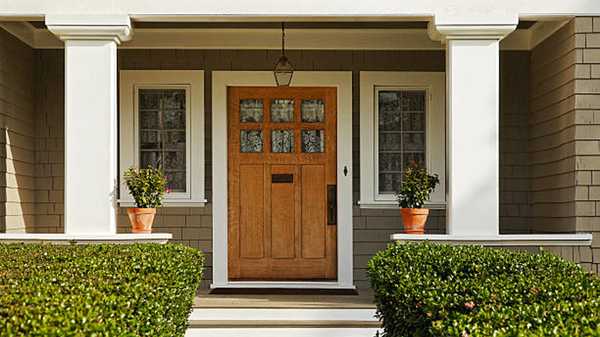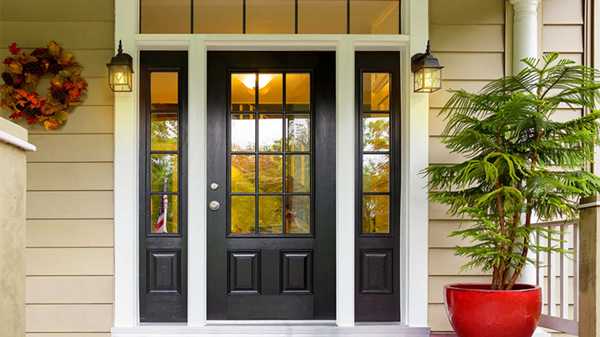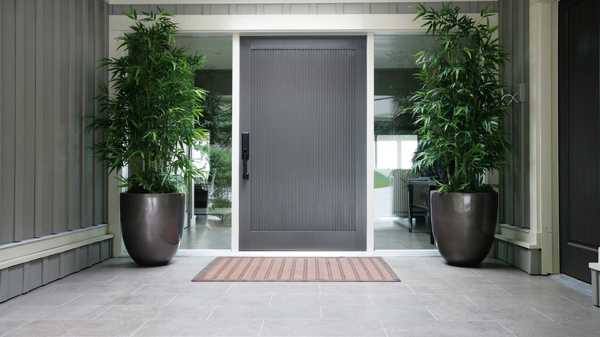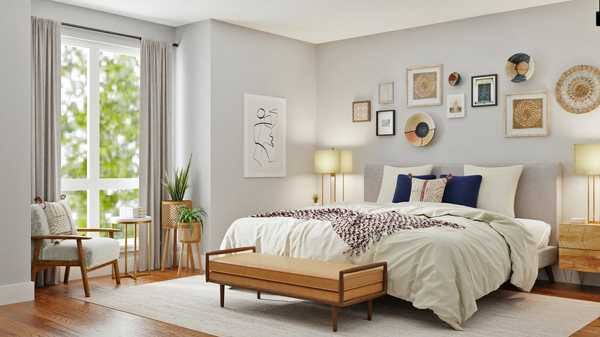Unlocking Style and Security: The Ultimate Guide to Choosing the Perfect Front Door
Discover how to choose the perfect front door for style and security. Explore materials, designs, and energy efficiency tips to enhance your home's appeal.
When considering the factors contributing to your home's security and appearance, the front door is a critical element. This entry point protects against intruders and acts as a visual centerpiece that can greatly enhance your home's curb appeal. A thoughtfully chosen front door can redefine your property's aesthetic, reflecting your style and leaving a lasting impression on guests. Furthermore, selecting the right door is a smart financial investment; it can bolster your home's market value and attract prospective buyers when the time comes to sell.
The process of choosing a front door extends beyond its visual appeal. Homeowners should consider numerous factors that influence the door's functionality and style. From assessing specific security needs and selecting suitable materials to exploring design options, energy efficiency, and budget limits, this comprehensive guide will cover everything necessary to help you make an informed choice. Prepare yourself to unveil a harmonious blend of style and security, ensuring your home is attractive and safe.
Assessing Your Needs

When deciding on a front door, several key functions must be considered beyond aesthetics. Paramount among these is security. A durable front door is the first line of defense against intruders, ensuring peace of mind, especially for families with children or pets. Look for doors crafted from robust materials like steel or solid wood, complemented by secure locks and sturdy hinges that deter unauthorized entry.
Before diving into the shopping experience, take time to define your personal style preferences. Are contemporary looks more appealing, or does traditional design resonate more? Identifying your aesthetic inclinations can streamline the selection process, ensuring that your new front door fulfills both practical needs and stylistic desires.
Material Matters
Choosing the right material for your front door significantly impacts its aesthetic, durability, maintenance demands, and energy efficiency. Below, we break down the pros and cons of the three most popular materials used for front doors: wood, fiberglass, and steel.
Wood Front Doors
Wood doors are celebrated for their timeless beauty and classic appeal. Available in a variety of styles and finishes, hardwoods like oak, mahogany, and cherry can truly enhance your home's character. However, they do require regular upkeep, including staining and sealing to safeguard them from moisture and UV rays, which can cause warping or cracking over time.
The durability of wood doors can vary by type: hardwoods tend to withstand wear and tear better than softwoods, which may be more susceptible to dents and scratches. In terms of insulation, while wood provides decent thermal resistance, it may not perform as efficiently as other options, particularly in extreme climates. Homeowners seeking a unique design may favor wood but should brace for consistent maintenance demands.
Fiberglass Front Doors
Fiberglass doors have surged in popularity due to their remarkable durability, maintenance ease, and energy-efficient attributes. Capable of mimicking wood's aesthetic, these doors offer versatility while showcasing enhanced resistance against dents and scratches. Fiberglass won't warp or rot unlike wood, making it especially suitable for humid or wet climates.
While typically less expensive than solid wood doors, fiberglass doors' aesthetic appeal might not appeal to those who prefer a traditional look. However, fiberglass doors excel in insulation, boasting energy-efficient properties that help maintain indoor temperatures. Homeowners focusing on energy savings and convenience would benefit significantly from opting for fiberglass.
Steel Front Doors

Steel doors stand out for their superior security and durability, making them an outstanding choice for homeowners prioritizing safety. These doors feature high resistance to impact and are particularly favored in high-crime areas. Generally equipped with foam core insulation, steel doors also provide excellent thermal performance, reducing energy expenses.
While aesthetically they may lack the charm of wood or fiberglass, steel doors can be painted to align with your home's exterior. However, if not finished correctly, they are prone to rust. For areas experiencing severe weather, steel doors emerge as the premier option, seamlessly combining security and practicality.
Choosing the Right Material
When determining the best material for your front door, consider your local climate and security needs. Wood might be ideal for drier areas, fiberglass performs well in humid conditions, and steel is the best guard for high-risk environments. Ultimately, an informed decision will balance aesthetics with energy efficiency and maintenance capacity. Each material holds distinct advantages; understanding these will guide you to a door that enhances your home's curb appeal while fulfilling crucial practical needs.
Design and Style
Selecting an ideal front door transcends mere functionality; it provides an opportunity to showcase individuality while amplifying the character of your home. The front door serves as the welcoming gateway to your private space, embodying aspects of style and security. Understanding the differences between traditional and modern designs can lead to a more satisfying and educated choice as you contemplate various options.
Traditional Designs: Elegance and Timelessness
Traditional front doors generally evoke a sense of timeless craftsmanship and warmth. Consider the iconic paneled door—an enduring choice that complements a range of architectural styles. With its raised or recessed panels, this style offers both formality and depth, often seen in colonial or Victorian homes, to make a strong aesthetic statement.
Another traditional favorite is the French door, featuring multiple glass panes framed by wood or metal. Bringing an air of sophistication, French doors allow for abundant natural light while maintaining a connection to outdoor spaces—ideal for homes adorned with gardens or scenic landscapes. The presence of such doors introduces unparalleled charm that modern options may struggle to rival.
Modern Styles: Minimalism Meets Functionality

In contrast, contemporary designs prioritize clean lines and simplicity. Materials such as fiberglass and aluminum often punctuate the minimalistic approach, resulting in sleek yet elegant entryways. Contemporary doors lack ornate detailing, a choice that resonates with urban aesthetics. These designs often boast bold colors and unique shapes, perfect for design-savvy homeowners intent on making a striking statement.
Modern options frequently incorporate intelligent security and energy-efficient technologies that balance aesthetic flair with practicality. Full-glass doors create a seamless fusion between indoor and outdoor spaces, blurring boundaries while creating bright, inviting environments.
The Allure of Decorative Elements
Incorporating decorative features can elevate a front door from ordinary to extraordinary. Glass inserts allow natural light while offering privacy, combining beauty and functionality. Unique handles or vintage knockers offer artisan flair that attests to careful craftsmanship. Such embellishments can transform your door into an engaging conversation piece, showcasing your personality.
Choosing the right front door is a nuanced process that intertwines style, practicality, and decorum. By reflecting on the era, design, color, and decorative components of your home's architectural identity, homeowners can craft an inviting entryway that is secure and a true reflection of their tastes and values.
Security Features
Prioritizing security features in a front door selection is vital for safeguarding your home and loved ones. A fundamental element within this choice is the locking mechanism. Opting for deadbolts enhances a door's security, as these locks provide additional resistance against forced entry. Selecting a deadbolt that complies with the ANSI/BHMA Grade 1 standard is best to ensure optimal security. Furthermore, consider doors incorporating a multi-point locking system, which secures the door at multiple points along the frame, making it significantly tougher for intruders to breach.
The structural features of the door are equally essential. Reinforced frames should be a priority; they offer added strength and withstand substantial force, reducing the risk of kick-ins. Seek frames are constructed from solid wood or metal, as these materials are more durable than hollow-core selections. Furthermore, choose impact-resistant glass. This glass type enhances safety by impeding break-ins while withstanding severe weather conditions. Constructed to resist shattering, this glass holds together under impact, adding an extra layer of security.
Lastly, as you search for doors with heightened security ratings, consult benchmarks from the American National Standards Institute (ANSI) and Underwriters Laboratories (UL). These ratings evaluate doors and locks based on their resistance to forced entry. Selecting products with high-security ratings provides peace of mind in your home. Investing in a front door that couples robust locking systems, reinforced frames, and firm security ratings significantly strengthens your home against potential risks.
An Invitation to Explore Your Perfect Front Door
Embarking on the journey to select your ideal front door is thrilling, merging essential functionality with personal aesthetics. Start by evaluating your security needs—decide what features are crucial for safeguarding your home, then contemplate the materials that will endure natural elements while providing energy efficiency. Do not underestimate design; select a style that resonates with your home's character, be it classic, contemporary, or uniquely personal.







